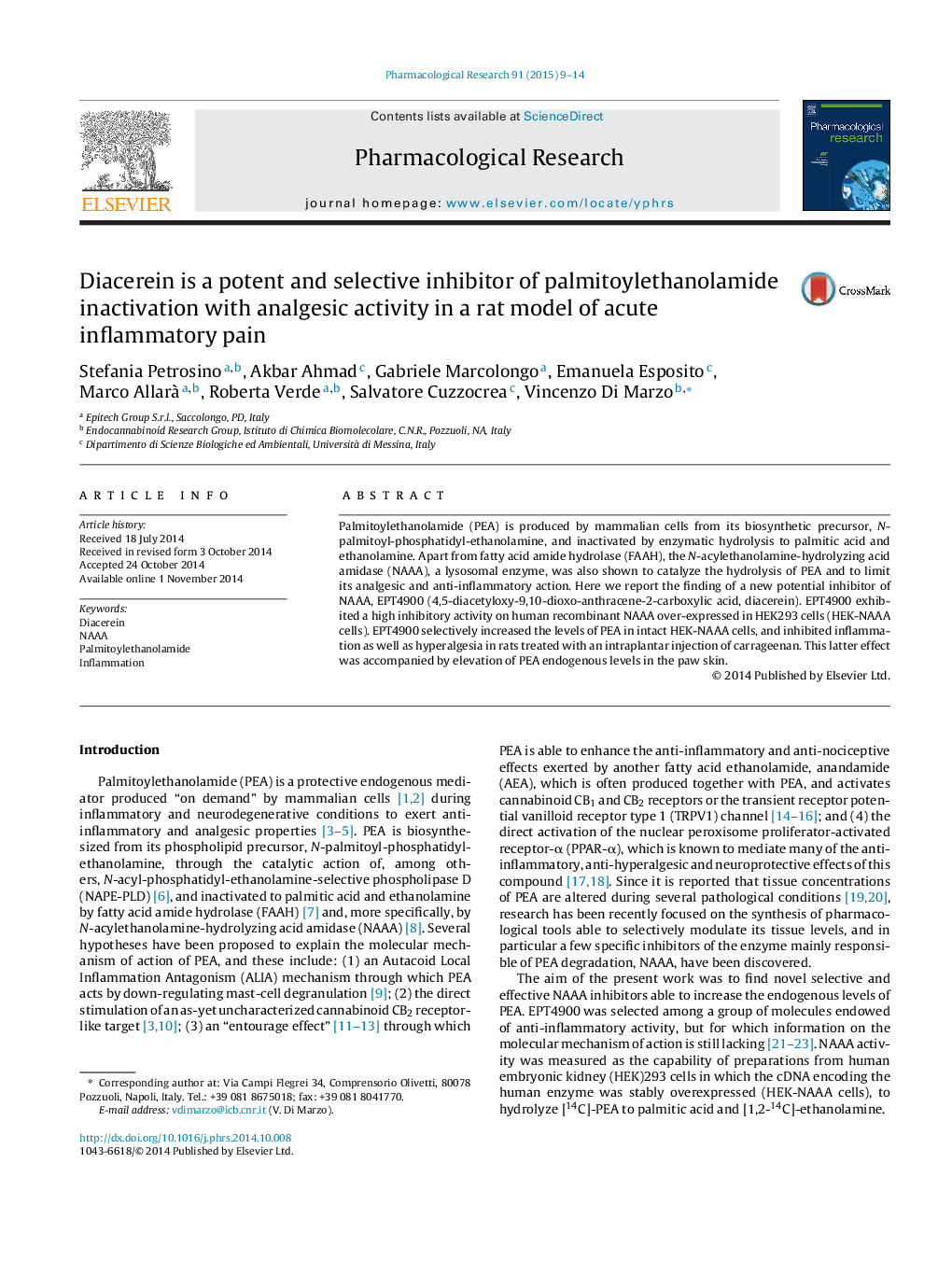| Article ID | Journal | Published Year | Pages | File Type |
|---|---|---|---|---|
| 5843080 | Pharmacological Research | 2015 | 6 Pages |
Abstract
Palmitoylethanolamide (PEA) is produced by mammalian cells from its biosynthetic precursor, N-palmitoyl-phosphatidyl-ethanolamine, and inactivated by enzymatic hydrolysis to palmitic acid and ethanolamine. Apart from fatty acid amide hydrolase (FAAH), the N-acylethanolamine-hydrolyzing acid amidase (NAAA), a lysosomal enzyme, was also shown to catalyze the hydrolysis of PEA and to limit its analgesic and anti-inflammatory action. Here we report the finding of a new potential inhibitor of NAAA, EPT4900 (4,5-diacetyloxy-9,10-dioxo-anthracene-2-carboxylic acid, diacerein). EPT4900 exhibited a high inhibitory activity on human recombinant NAAA over-expressed in HEK293 cells (HEK-NAAA cells). EPT4900 selectively increased the levels of PEA in intact HEK-NAAA cells, and inhibited inflammation as well as hyperalgesia in rats treated with an intraplantar injection of carrageenan. This latter effect was accompanied by elevation of PEA endogenous levels in the paw skin.
Related Topics
Health Sciences
Pharmacology, Toxicology and Pharmaceutical Science
Pharmacology
Authors
Stefania Petrosino, Akbar Ahmad, Gabriele Marcolongo, Emanuela Esposito, Marco Allarà , Roberta Verde, Salvatore Cuzzocrea, Vincenzo Di Marzo,
